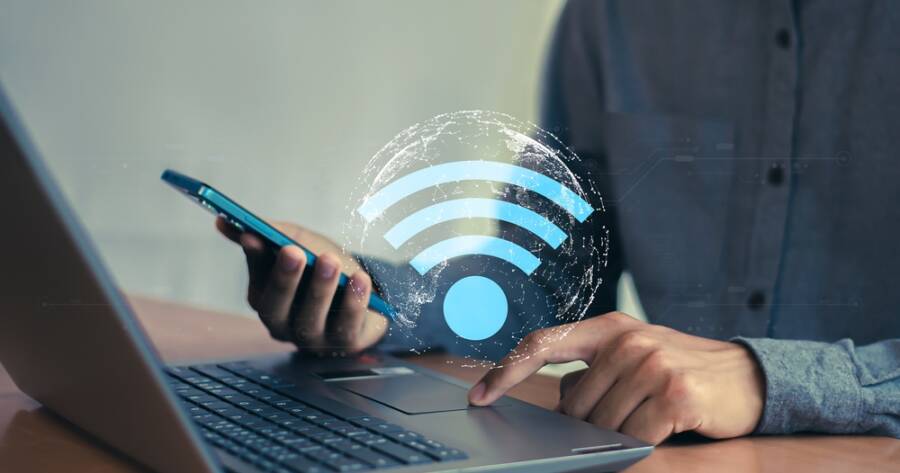With the cost of internet service rising, many households are looking for ways to cut back on their WiFi bills without sacrificing quality or reliability. Fortunately, there are several effective strategies available, from negotiating with your provider to taking advantage of government assistance programs. By making a few smart changes, you can enjoy fast, reliable internet while keeping more money in your pocket each month.
Evaluate Your Internet Needs
One of the first steps to saving money is assessing how much internet speed you truly need. Many people pay for high-speed plans that far exceed their actual usage, especially if their online activities are limited to browsing, email, and streaming standard-definition videos. Most households with basic internet needs can get by with lower-tier plans, which are significantly less expensive.
How to determine your needs:
- Count your devices: The more devices connected at once, the more bandwidth you’ll use.
- Monitor your usage: Use your provider’s app or website to track data consumption.
- Consider your habits: If you rarely download large files or stream in 4K, you likely don’t need a premium plan.
Explore Low-Cost and Assistance Programs
Government and nonprofit programs can help eligible households reduce their internet costs. In the United States, the Lifeline program offers a monthly discount of about $9 on broadband for qualifying low-income individuals. Some states and cities also have their own initiatives, and many providers now offer plans specifically designed for low-income families, often with speeds of at least 100 Mbps—plenty for most users.
How to find these programs:
- Check your eligibility: Visit the Lifeline program website or your state’s broadband assistance page.
- Contact your provider: Ask about low-cost internet plans or discounts for students, seniors, or military families.
- Use nonprofit resources: Organizations like EveryoneOn can help you locate affordable internet options in your area.
Buy Your Own Equipment
Many internet service providers charge a monthly fee for renting a modem and router—often between $10 and $20 per month. Over time, these rental fees can add up to hundreds of dollars. Purchasing your own compatible equipment is a one-time expense that typically pays for itself within a year.
What to look for when buying equipment:
- Ensure compatibility: Check your provider’s website for a list of approved modems and routers.
- Consider performance: Look for devices with good reviews and features that match your needs.
- Keep your receipt: Some providers require proof of purchase for troubleshooting support.
Negotiate or Switch Providers
Negotiating with your current provider can lead to significant savings. Many companies offer promotional rates to retain customers, especially if you mention that you’re considering switching to a competitor. Researching current deals from other providers gives you leverage during these conversations.
Tips for negotiating:
- Be polite but firm: Let your provider know you’ve found better deals elsewhere.
- Mention loyalty: If you’ve been a customer for a long time, ask for a loyalty discount.
- Be prepared to switch: Sometimes, the best way to save is to change providers for a new customer promotion.
Bundle Services Strategically
Bundling your internet service with other utilities—such as cable TV or a mobile phone plan—can sometimes result in discounts. However, it’s important to compare the total cost of bundled services to the cost of purchasing them separately. Bundling isn’t always the best deal, especially if you don’t use all the included services.
When bundling makes sense:
- You use all the services: If you already pay for TV and phone, bundling can save money.
- The discount is significant: Make sure the savings outweigh any extra fees or unnecessary services.
Use Wi-Fi Hotspots or Mobile Broadband
For light internet users, mobile broadband or public Wi-Fi hotspots can be a cost-effective alternative to traditional home internet. Many cell phone plans include hotspot capabilities, allowing you to use your phone as a portable modem. This approach works best for individuals or small households with minimal data needs.
Things to keep in mind:
- Data limits: Streaming and large downloads can quickly use up your monthly data allowance.
- Reliability: Mobile broadband may not be as fast or stable as a wired connection, especially in areas with poor signal.
Remove Optional Add-Ons and Monitor Usage
Many internet bills include optional add-ons, such as extra security features or cloud storage, that you may not need. Review your bill each month and remove any unnecessary services. Additionally, monitoring your data usage can help you avoid overage charges if your plan has a data cap.
How to keep your bill low:
- Review your statement: Look for recurring charges for services you don’t use.
- Set usage alerts: Many providers allow you to set alerts when you approach your data limit.
- Limit background data: Some devices and apps use data even when you’re not actively using them.
It’s Time To Save
Saving money on your WiFi bill doesn’t have to mean sacrificing speed or reliability. By evaluating your needs, exploring low-cost programs, buying your own equipment, negotiating with providers, and monitoring your usage, you can enjoy affordable internet service that fits your budget. With a little effort and research, you can keep your household connected without breaking the bank.

